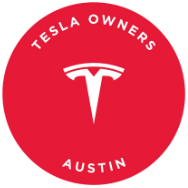Tesla has recently launched a supervised ride-hailing service for its employees in Austin, Texas, and the San Francisco Bay Area. This service aims to test and improve Tesla’s Full Self-Driving (FSD) technology and related systems. The company has reported that vehicles in the program have already completed over 1,500 trips and driven more than 15,000 miles, although it is currently only available to a select group of employees.
This pilot program allows Tesla to test various components of its future robotaxi platform, such as the mobile app for booking rides, vehicle allocation, and support operations like remote assistance and dispatch, which Tesla refers to as “mission control.” By testing these key elements, Tesla can further develop and validate its FSD networks and operational processes.
So how does the ride-hailing service work? Customers can order a ride through the Tesla app, and a self-driving car will arrive to pick them up. Once inside the vehicle, passengers simply need to put on their seatbelt and tap ‘Start Ride’ on the rear touchscreen to begin their journey. The rear screen displays the destination address and estimated arrival time, with a prominent ‘Start Ride’ button for convenience.
Tesla has also shared a video demonstrating the FSD supervised ride-hailing service on Twitter, showcasing the seamless experience for passengers. Additionally, during Tesla’s Q1 earnings call, the company confirmed that its robotaxi service is on track to launch in June in Austin, Texas.
Overall, Tesla’s supervised ride-hailing service represents a significant step towards realizing the potential of autonomous driving technology. By testing and refining its FSD capabilities through real-world applications, Tesla is paving the way for a future where self-driving cars are a common sight on our roads.

